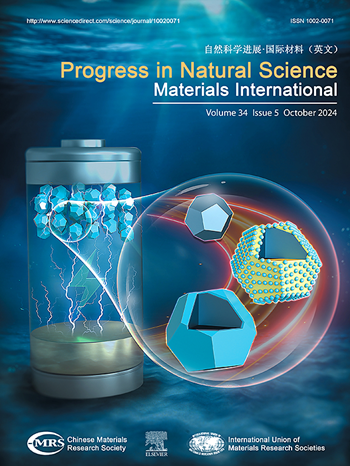微纳米塑料的处理工艺及定量策略研究进展
IF 7.1
2区 材料科学
Q2 MATERIALS SCIENCE, MULTIDISCIPLINARY
Progress in Natural Science: Materials International
Pub Date : 2025-08-01
DOI:10.1016/j.pnsc.2025.05.003
引用次数: 0
摘要
塑料是产品包装、医疗植入物和其他应用的选择。但是,塑料通过物理作用或化学降解转化为微小颗粒,称为微塑料和纳米塑料(MNPs,微塑料尺寸为5毫米,纳米塑料尺寸为1 μm),导致它们几乎在每个生态系统中广泛存在,人们担心它们对环境和人类健康的影响。因此,建立系统中MNPs最大浓度的标准化线对于确保MNPs与自然以及人类共存至关重要。然而,MNPs在大小、聚合物类型和密度方面的复杂性和多样性使得MNPs的鉴定和量化成为一项重大挑战。本文介绍了从环境样品中纯化或提取MNPs的代表性处理工艺,以及MNPs定量分析的先进方法。特别关注与MNPs定量分析相关的技术,并讨论了这些方法的优点和局限性。此外,展望了在研究系统中MNPs最大浓度的标准化线时建立统一和标准化的MNPs定量分析方法的必要性,并讨论和总结了未来面临的挑战和迫切需要关注的问题。本文章由计算机程序翻译,如有差异,请以英文原文为准。
Progresses in treatment processes and quantification strategies of micro- and nanoplastics
Plastics are the choice for package of products, medical implants, and other applications. But the transformation of plastics into minuscule particles, known as micro- and nanoplastics (MNPs, microplastics’ size <5 mm and nanoplastics’ size <1 μm), through physical action or chemical degradation, led to their widespread presence in virtually every ecosystem, and there are concerns about their impact on the environment and human health. Therefore, establishing standardized lines for maximum concentrations of MNPs in a system is essential to ensure the coexistence of MNPs with nature as well as humans. However, the complexity and diversity of MNPs in terms of size, polymer type, and density make the identification and quantification of MNPs a significant challenge. This review introduces representative treatment processes for purification or extraction of MNPs from environmental samples, and the advanced methods for quantitative analysis of MNPs. Special attention is paid to techniques related to the quantitative analysis of MNPs, and the advantages and limitations of these methods are discussed. Moreover, the necessity of establishing harmonized and standardized methods for the quantitative analysis of MNPs in investigating standardized lines of maximum concentrations of MNPs in the systems is envisioned, and the challenges and urgent issues with concerns for the future are discussed and summarized.
求助全文
通过发布文献求助,成功后即可免费获取论文全文。
去求助
来源期刊
CiteScore
8.60
自引率
2.10%
发文量
2812
审稿时长
49 days
期刊介绍:
Progress in Natural Science: Materials International provides scientists and engineers throughout the world with a central vehicle for the exchange and dissemination of basic theoretical studies and applied research of advanced materials. The emphasis is placed on original research, both analytical and experimental, which is of permanent interest to engineers and scientists, covering all aspects of new materials and technologies, such as, energy and environmental materials; advanced structural materials; advanced transportation materials, functional and electronic materials; nano-scale and amorphous materials; health and biological materials; materials modeling and simulation; materials characterization; and so on. The latest research achievements and innovative papers in basic theoretical studies and applied research of material science will be carefully selected and promptly reported. Thus, the aim of this Journal is to serve the global materials science and technology community with the latest research findings.
As a service to readers, an international bibliography of recent publications in advanced materials is published bimonthly.

 求助内容:
求助内容: 应助结果提醒方式:
应助结果提醒方式:


